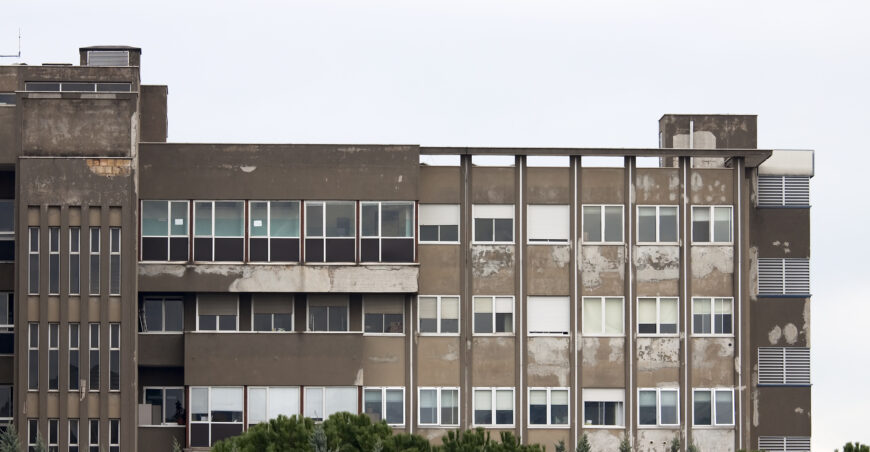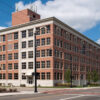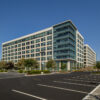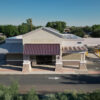If you’re an owner or investor in commercial real estate, you may be asking how to deal with one or multiple aging office buildings, which is an interesting dilemma many real estate owners and investors have to deal with. According to recent data, 68% of U.S. office space was built before 2000, which means many of these buildings are outdated, inefficient, and unappealing to tenants.
In fact, the combination of remote work and aging infrastructure could lead to a $500 billion loss in value for U.S. office buildings by 2029. But there’s also an opportunity here. By revamping old buildings, developers and investors may be able to tap into a lucrative market and attract new tenants.
In this article, we’ll explore the impacts of aging office buildings, the advantages of newer buildings, and the potential for transforming old properties into vibrant, attractive workplaces that meet the needs of today’s workforce.
Out With the Aging Office Buildings
As many office buildings in the U.S. continue to age, they face a number of challenges that can impact their value. Antiquated systems, such as HVAC, plumbing, and electrical, can be expensive to maintain and may not meet modern energy efficiency standards. Dated features, like closed-off cubicles and low ceilings, may not be appealing to younger workers who prefer open, collaborative spaces. Limited curb appeal can also make it harder for building owners to attract new tenants or charge higher rents.
The rise of remote work has only compounded these challenges. It is now estimated that over 68% of Americans prefer to work from home. The same percentage of people say they are more productive when working from home. It’s a problem that real estate developers and white collar executives are having to face head on. As more workers stay home, building owners may struggle to fill vacancies, leading to decreased rental income and lower property values.
As tenants demand more flexibility and amenities, older buildings may find it harder to keep up. Many are simply not designed for the needs of a modern workforce, as they have limited or outdated technology, inadequate ventilation, and poor access to natural light.
In With the New Office Buildings
As the commercial real estate market continues to evolve, developers and investors are looking to the future and investing in newer, more modern office buildings. And it’s not hard to see why. Newer buildings have lower vacancy rates compared to older, outdated buildings, and offer a range of features that are more appealing to today’s workforce. But what about older properties?
While newer buildings may offer many benefits, there is still a lot of potential in older properties. By renovating and updating these buildings, developers and investors can breathe new life into them and create spaces that are just as appealing to tenants as newer buildings.
A great example is NBBJ’s recent renewal of the 56-story Two Union Square office tower in Seattle. The building’s lobbies were transformed from mere passageways into destinations that are more welcoming to tenants and the public.
By reimagining the space and creating new features, NBBJ was able to transform an outdated building into a modern, attractive space. Only time will tell how effective the remodel was at creating a productive workspace, but so far, the future for NBBJ’s Union Square office is promising.
Emphasis on New Office Buildings
One of the biggest incentives for companies to move into newer buildings is the ability to attract newer, fresher talent. Younger workers often prefer modern, open spaces with lots of natural light and amenities like gyms, cafes, and outdoor spaces. By investing in new construction or major renovations, developers can create spaces that meet these needs and appeal to younger workers.
Key Features of Tomorrow’s Office Buildings
Looking to the future, there are a few key themes that developers and investors will need to keep in mind when building new office buildings. High-quality design, transit access, environmental impact, and social impact will all be important factors in attracting tenants and creating spaces that are both functional and appealing. And with more companies embracing flexible work models, 24/7 accessibility will also be a key consideration.
Arizona – No. 2 State for CRE Development
Cities like Seattle, San Francisco, and NYC often steal the front cover when it comes to big business. But the cities of Phoenix and Tucson in sunny Arizona are giving reason for that to soon change.
Arizona is already a major player in the commercial real estate (CRE) industry, ranking as the second highest state for overall contributions of real estate to state GDP. In 2022 alone, the state’s CRE development contributed $91.3 billion to the state’s GDP, with $41.2 billion in direct spending and $37 billion in personal earnings.
Not only does the industry provide significant financial benefits, but it also supports over 661,000 jobs in the state. Arizona’s growing reputation in the industry can be attributed to its commitment to developing next-generation type commercial real estate.
Currently, there is no better example than Arcadia’s, The Grove – a massive 180,000 square foot office space. The Grove’s enormous campus will include three Class A office buildings, several upscale dining options, multiple retail spaces, a hotel, and much more. What’s most interesting about The Grove? The office space is fully leased, with several multi-million-dollar businesses set to move in upon completion, proving there is still room for growth in the commercial office industry.
The state’s focus on innovative development has not only bolstered the state’s economy, but it also positions Arizona as a hub for future CRE growth and development.
Commercial Real Estate Opportunity in 2023
The commercial real estate market is changing rapidly, and developers and investors need to be ready to adapt. Whether by investing in new construction or renovating old buildings, there are plenty of opportunities to create modern, attractive office spaces that meet the needs of today’s workforce.
By embracing the future of commercial real estate, we can create a more vibrant, dynamic market that benefits everyone. Looking for more information on today’s commercial real estate market? Feel free to reach out to us at ICRE Invest. Let’s say goodbye to the old and embrace the new.
















